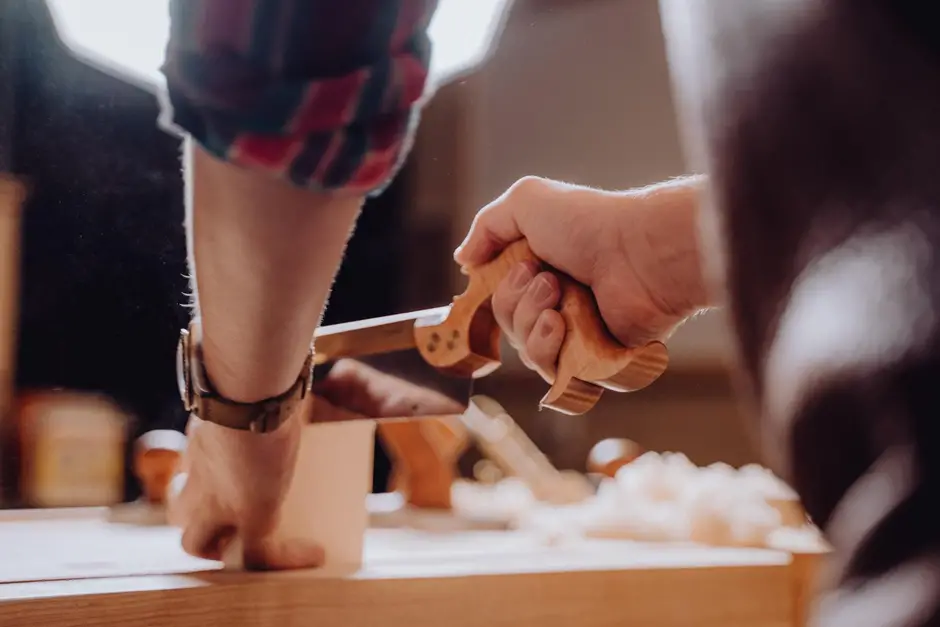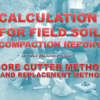A workbench is a go-to tool in any workspace, from woodworking to metalworking. Benches provide a stable work surface where tasks can be completed with precision. There are different working tables designed to suit different types of work. Let’s get the hang of the various types of workbenches and their handy features.

10 Types of Workbenches
General-Purpose Workbench
The most common type of workbench is the general-purpose workbench, which is used in various settings. You can use this gear for different tasks including assembling small parts, cutting and drilling, and storing general items. They can be crafted from various materials including wood, metal, or a combination of both. Perfect for garage DIYers who are planning to perform various tasks.
Metalworking Workbench
A workbench for metalworking is intended for cutting, bending, and shaping metal. They usually consist of steel or other strong metals that are able to withstand the damages caused by metalworking. Built-in vises and clamps are also present in some models to secure metal parts for heavy-duty work.
Woodworking Workbench
Woodworking benches are workstations created for woodworking activities like sawing, planing, and chiseling. They are made from hardwood which offers a strong and durable surface to work on. Such a woodworking bench may include clamps and vises to securely hold pieces of wood in place.
Electronics Workbench
Electronics workbenches are designed for specific tasks like soldering, wiring, and testing electronic components. They usually have a work surface that’s non-conductive and might have power outlets, lighting, and tool/component storage built-in.
Wall-Mounted Workbench
A workbench that can be mounted on a wall is a convenient choice for those who want to save space in their garage or workshop. When not in use, such a bench can be easily collapsed, making it perfect for smaller areas. Wall-mounted benches are available in different materials such as wood, metal, or plastic.
Folding Workbench
A foldable workbench is similar to the wall-mounted counterpart – it can be folded and stored when not in use. This gear is a versatile option for a range of tasks as it often has adjustable legs or height settings.
Workbench with Vice
A workbench that includes a vice is a widely used type of bench in crafts like woodworking and metalworking. The vice is usually attached to the bench, providing a stable grip on the materials being worked on.
Cabinet Workbench
Such a model contains cabinets, drawers, and shelves for built-in storage. This feature is useful in workshops and garages where space is limited as it combines both a work surface and storage.
Jeweler’s Workbench
This is a specific type of working bench that is made for the purpose of jewelry making and repair. It comes with a soft surface to ensure that delicate materials are not damaged, and also has storage built-in for tools and materials.
Laboratory Workbench
Scientific and medical laboratory workbenches are made of stainless steel for easy sanitation and cleaning. They can include sinks, gas lines, and electrical outlets for experiments and research. Such benches are usually made of heavy-duty materials to provide stability during laboratory procedures. Plus, they are corrosion-free to avoid any contamination.
Factors to Consider When Choosing a Workbench
Identify the type of job that will be done on the bench. As previously mentioned, various kinds of workbenches are created for specific jobs. Opting for the suitable workbench type will ensure efficient work.
When choosing a solid workbench, it’s important to consider its size. If the workbench is too small, there won’t be enough workspace, and if it’s too large, it might take up too much space. The height of the gear should be adjusted to fit the user’s physical dimensions to prevent injury or strain.
Keep the budget in mind as well. Working tables vary in price based on the materials and features and can cost anywhere from $200 to $5,000 and more.
Also Read: 5 Creative Strategies for Improving Workplace Safety Culture
Accessories and Add-Ons
To customize a workbench for specific tasks, you can use extra trinkets in addition to selecting the appropriate type of workbench. Some common accessories include:
- Vises and clamps. Attach these details to the workbench in order to securely hold pieces of material in place while working on them.
- Tool holders. They will keep your tools both organized and easily accessible.
- Lighting. To improve visibility when working on small or intricate tasks, install extra lighting on the workbench.
- Power strips. Attach power strips to your bench for additional outlets to plug in your tools and equipment.
Also Read: LVL Beam – Everything including Sizes – Cost – Span Calculator
Proper Workbench Maintainance
General Tips
Over time, workbenches that are not maintained properly can become less stable and safe for use. Regular cleaning and oiling can contribute to keeping a workbench in good condition. This can prevent rusting and ensure that the table surface remains smooth and easy to work on.
Workbench Storage
To take good care of your bench, store it properly when not in use, especially if it’s a portable table. Store the gear in a dry, cool place away from direct sunlight to prevent damage from moisture, heat, or UV rays.
To prevent scratches and other damage during transport and storage, store the portable workbench in a carrying case or cover.
Also Read: Construction Tools Names and Their Uses Complete LIST [50+]
Regular Inspection
Test your workbench for any signs of damage or wear that may require repairs or replacement. Visually check the table surface for cracks, splits or any other kind of damage on a regular basis.
Examine all hardware and attachments, like vice jaws or clamps, to guarantee that they are functioning correctly and are securely fastened.
Lubrication
Lubricate the moving parts such as drawers, wheels, or vice mechanisms. This helps prevent wear and tear and enables smooth functioning of the moving parts.
To avoid damaging the working bench, use the appropriate lubricant for the specific materials and parts. Overusing or applying the wrong type of lubricant may result in harm to the workbench.
Replacement Parts
If your workbench shows signs of wear or damage, make sure to replace the affected parts using compatible ones that match the model and materials of the gear.
To replace parts, you can either order them directly from the manufacturer or buy them from a reliable supplier. Adhere to the manufacturer’s guidelines for replacing the parts properly.
Professional Inspection
In case you use the workbench on a frequent basis, it’s better to get it inspected by a qualified technician. Professional inspections can reveal any problems or damage that may not be obvious during a visual inspection and offer suggestions for repairs or maintenance.
Workbench Safety
As for safety, remember to wear PPE (personal protective equipment) like safety glasses and gloves while working with power tools or tasks that have a chance of generating debris or splinters. Make sure to practice safe work habits, like keeping the workspace clutter-free and using the tools and equipment properly.
How to Care for Different Type of Workbenches
Wood Workbenches
If you are using a workbench for your woodworking projects, it is likely made of wood. In this case, keep the bench clean and dry. As moisture can damage the wood and cause warping and splitting, avoid exposing it to too much moisture.
You can clean a dirty or stained wood workbench with a mild soap and water solution. Harsh chemicals as well as abrasive cleaners should be avoided as those can cause damage to the wood. You can prevent scratches or gouges by using a bench mat or covering the surface with a sacrificial sheet of plywood.
To maintain the smoothness and prevent drying out of the wood, oil your bench with linseed or mineral oil. Inspect the workbench frequently for any damage, such as cracks or splits, and fix them as soon as possible.
Metal Workbenches
To ensure metal’s bench durability, you should keep it clean and dry in order to avoid rust buildup and corrosion. To clean the metal table, use a mild soap and water solution. Avoid abrasive cleaners and harsh chemicals as they can scratch the surface or damage the protective coating, resulting in stains or damage.
Keep your metal workbench free from moisture to prevent rust and corrosion. If the gear is used in a humid environment, applying a coat of rust inhibitor can help prevent the formation of rust.
Plastic Workbenches
The main goal is to keep plastic clean and dry. Do not to expose it to extreme heat or direct sunlight as such may cause warping or brittleness over time.
To clean this workbench type, use a mild soap and water solution. Avoid harsh chemicals or abrasive cleaners as those can cause scratches or damage the plastic.
Electronics Workbenches
To ensure the safety and functionality of the electronics workbench, clean the gear regularly and keeping it free from dust and debris are important steps to take.
Steer clear of harsh cleaners or abrasives to avoid damaging the anti-static surface of the bench. Rather, use a mild cleaner or anti-static wipes to clean the table if it’s equipped with an anti-static top.
To avoid electrical hazards, make sure all power outlets and equipment are properly grounded. Regularly check the workbench for any damage or wear, and fix it immediately to prevent accidents.
Laboratory Workbenches
Laboratory workbenches must ensure they remain safe and hygienic. This means keeping them clean and free from contaminants.
To prevent bacteria or mold growth, keep the workbench area around the sink or water source dry. Any spills or leaks should be immediately dried out to avoid harm to the table or nearby equipment.
Conclusion
A properly fitted workbench provides accurate and efficient work. The selection process involves considering factors such as the size of the workbench, type of work, and the budget. Maintain regularly and follow safety procedures to keep the bench in ace condition and guarantee safe work. Adding accessories can enhance your productivity and organization of your workspace.


![Engineering Communication by Knisely [PDF] [FREE DOWNLOAD]](https://definecivil.com/wp-content/uploads/2021/05/Editorial-Markup-Stop-Start-Continue-Brainstorm-Presentation-150x150.jpg)














